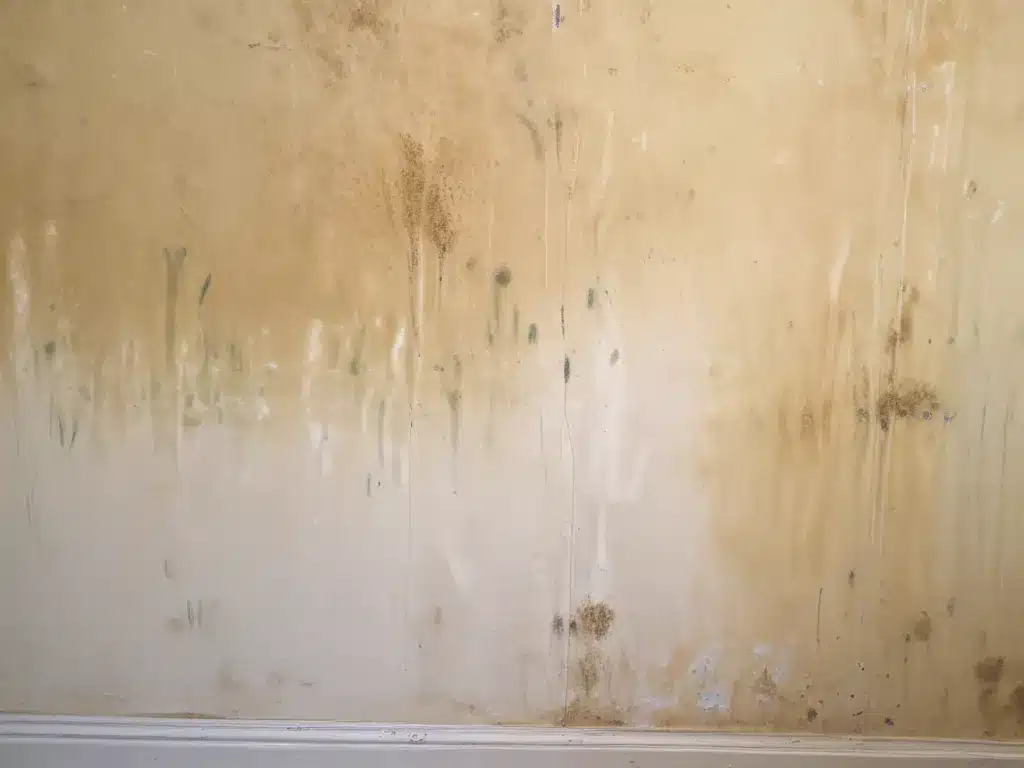Introduction
Mold growth is a persistent problem that many homeowners and businesses face. It not only creates an unsightly appearance but also poses serious health risks, especially for those with respiratory issues or weakened immune systems. Mold thrives in damp and humid environments, making moisture control a crucial aspect of effective mold remediation. In this comprehensive guide, I will delve into the intricacies of mold remediation, focusing on addressing underlying moisture issues to achieve long-term solutions.
Understanding Mold and Its Causes
Mold – a fungus that grows in the form of multicellular filaments – thrives in moist environments. It releases spores that can be harmful to human health, particularly for individuals with allergies or respiratory conditions. Common causes of mold growth include:
- Water leaks from pipes, roofs, or windows
- Condensation on cold surfaces
- Flooding or water damage from natural disasters
- Humidity levels exceeding 60%
- Poor ventilation in bathrooms, kitchens, or laundry rooms
To effectively remediate mold, it is essential to identify and address the root causes of moisture accumulation. Failure to do so will result in recurring mold growth, even after initial remediation efforts.
Assessing the Extent of Mold Contamination
Before embarking on mold remediation, it is crucial to assess the extent of the contamination. This assessment involves:
- Visual inspection to identify areas of mold growth
- Determining the source of moisture fueling the mold
- Assessing the potential health risks based on the type and extent of mold
- Determining the need for professional mold remediation services
While minor mold growth on surfaces may be addressed through DIY methods, extensive contamination or mold growth in concealed areas often requires professional intervention.
Addressing Moisture Issues
Effective mold remediation hinges on resolving the underlying moisture issues that facilitate mold growth. Here are some common approaches to addressing moisture:
1. Repairing Leaks and Water Intrusion
One of the primary steps in mold remediation is identifying and repairing any leaks or sources of water intrusion. This may involve:
- Fixing leaky pipes or plumbing fixtures
- Sealing cracks or gaps in walls, windows, or foundations
- Repairing or replacing damaged roofs or flashing
- Improving drainage around the building’s foundation
Prompt repair of water intrusion sources is crucial to prevent further mold growth and water damage.
2. Improving Ventilation
Proper ventilation plays a vital role in controlling indoor humidity levels and preventing moisture buildup. Consider the following ventilation strategies:
- Install exhaust fans in bathrooms, kitchens, and laundry rooms
- Use dehumidifiers in damp areas or during humid seasons
- Ensure adequate air circulation by opening windows or using fans
- Upgrade ventilation systems to improve air exchange rates
Effective ventilation not only helps control moisture levels but also improves indoor air quality by removing pollutants and reducing the risk of mold growth.
3. Addressing Condensation Issues
Condensation can occur on cold surfaces, such as windows, walls, or pipes, when warm, humid air comes into contact with them. To mitigate condensation problems:
- Insulate cold surfaces to prevent temperature differentials
- Increase air circulation around cold surfaces
- Use dehumidifiers or moisture absorbers in affected areas
- Adjust heating and cooling systems to maintain comfortable temperature and humidity levels
Addressing condensation issues is crucial, as persistent moisture on surfaces can lead to mold growth and potential structural damage.
4. Waterproofing and Moisture Barriers
In areas prone to water intrusion or high humidity, waterproofing and moisture barriers can be effective preventive measures. These may include:
- Installing vapor barriers in crawl spaces or basements
- Applying waterproofing membranes or coatings to foundations or basement walls
- Using moisture-resistant building materials in high-humidity areas
Proper waterproofing and moisture barriers can help prevent water intrusion and create a barrier against moisture, minimizing the risk of mold growth.
Professional Mold Remediation Services
In cases of extensive mold contamination or when dealing with concealed mold growth, it is often advisable to seek professional mold remediation services. These services typically involve:
- Containment and isolation of the affected area
- Removal of contaminated materials (e.g., drywall, insulation, carpets)
- Thorough cleaning and disinfection of surfaces
- Restoration and repair of damaged areas
- Implementation of preventive measures to address moisture issues
Professional mold remediation companies have the expertise, equipment, and resources to safely and effectively address mold problems, ensuring the health and safety of occupants.
Maintaining a Mold-Free Environment
Even after successful mold remediation, maintaining a mold-free environment requires ongoing vigilance and preventive measures. Here are some tips to keep in mind:
- Regularly inspect for signs of moisture or water intrusion
- Promptly address any leaks or water damage
- Monitor and control indoor humidity levels
- Ensure proper ventilation in high-moisture areas
- Conduct periodic inspections and maintenance of building systems (e.g., HVAC, plumbing)
- Consider hiring professional mold inspection and remediation services for peace of mind
By staying proactive and addressing moisture issues promptly, you can minimize the risk of recurring mold growth and maintain a healthy indoor environment.
Conclusion
Mold remediation is a complex process that requires addressing the underlying moisture issues to achieve long-lasting results. By identifying and repairing water intrusion sources, improving ventilation, addressing condensation problems, and implementing waterproofing measures, you can effectively eliminate the conditions that promote mold growth. In cases of extensive contamination or concealed mold, seeking professional mold remediation services from reputable companies like AdamCleaning.uk is highly recommended. Remember, maintaining a mold-free environment requires ongoing vigilance and a commitment to promptly addressing any moisture-related issues that may arise.







